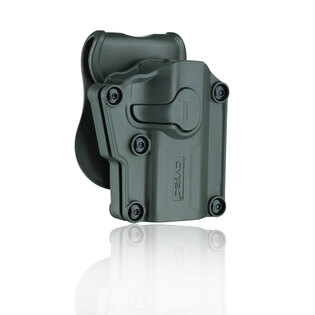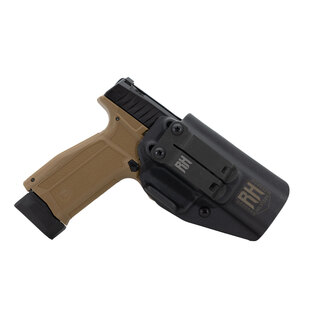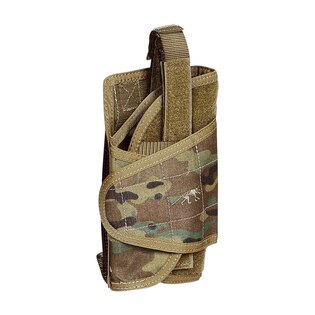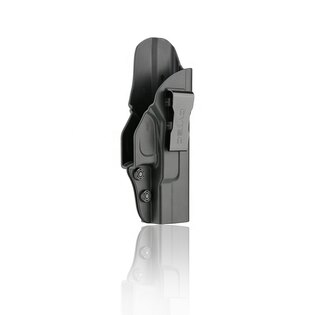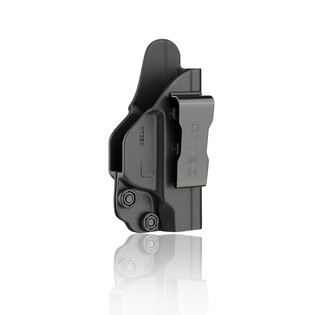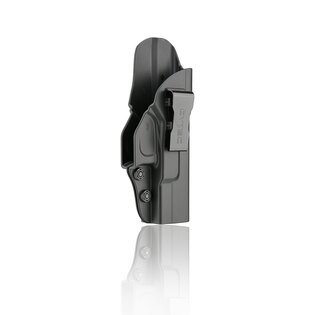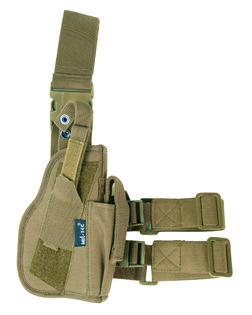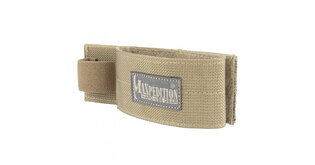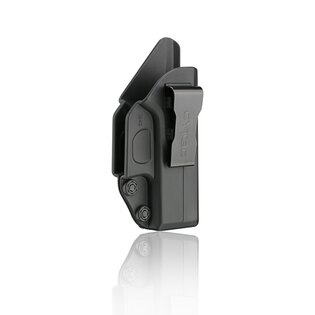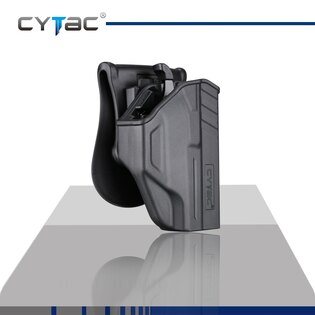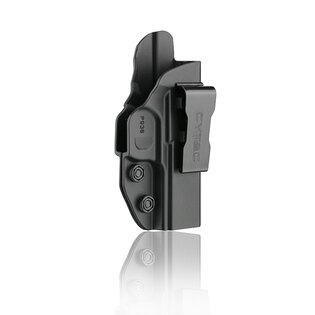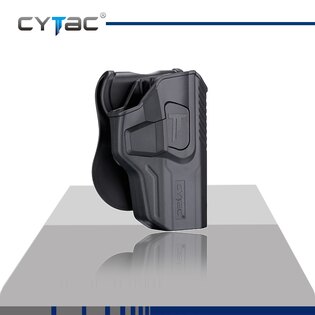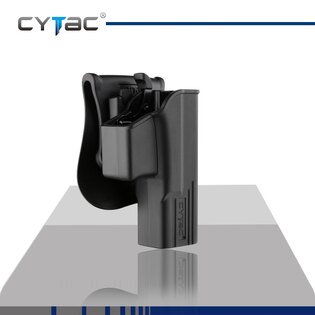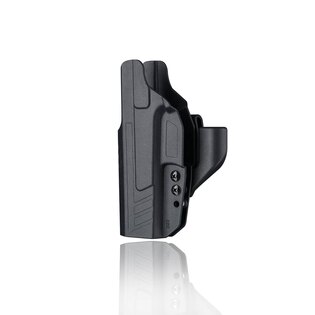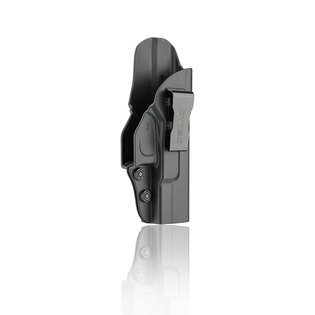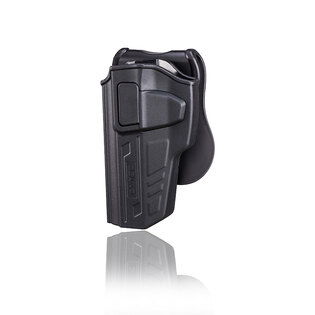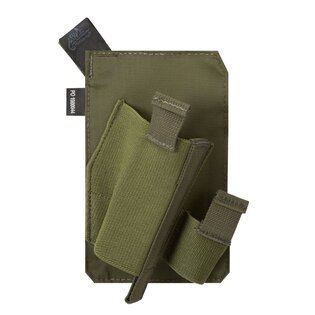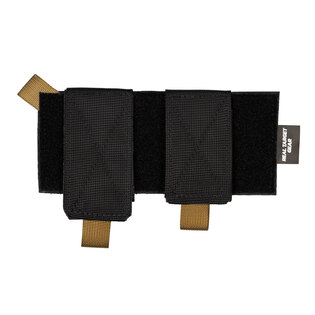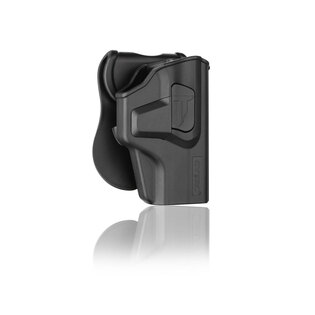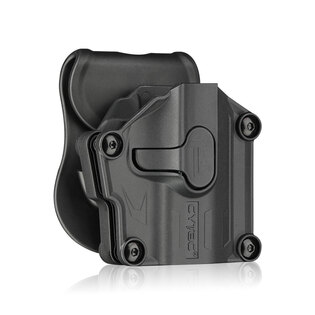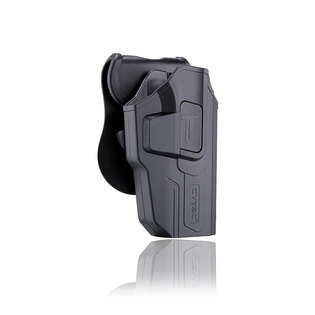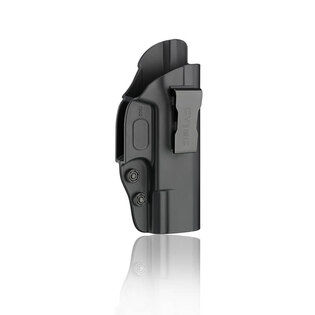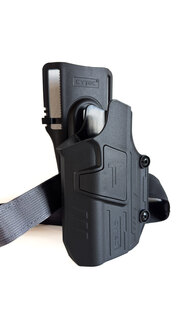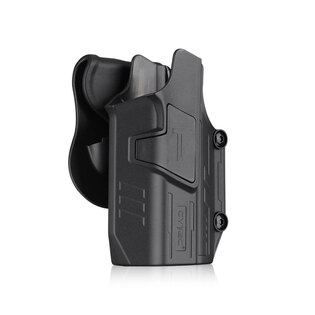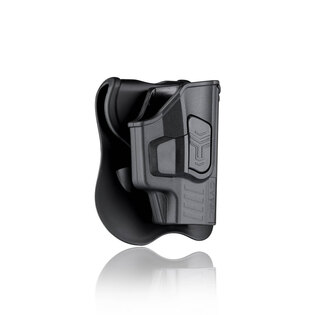5 most common materials for gun holsters
The material that your chosen pistol holster will be made from is one that you will trust when it comes to safely storing and carrying your pistol. There are several possible options, and we'll cover a total of five of them in this article. Each has its pros and cons. Which one will suit you best?
1. Polymer pistol holsters
Polymer pistol holsters are one of the most commonly used nowadays, not only because of their relative simplicity of manufacturing process, but also because there are many arguments for their use, which we will discuss in the following paragraphs. Polymer holsters are made by melting a semi-finished material (polymer pellets). This is poured into prepared moulds, and the design and manufacture of the moulds is one of the more complex stages of production from the manufacturer's point of view. After cooling, the finished holster is removed from the mould.
Advantages of polymer holsters:
- High strength and durability.
- Relatively high resistance to extreme temperatures.
- Significant sculptability, so designers can really play with the resulting look of the holster.
- Easy and fast drawing of the pistol.
- Dust and water resistance.
- Comfortable to wear.
They have perhaps only one disadvantage:
- With prolonged use, they can gradually wear away the finish of the gun.
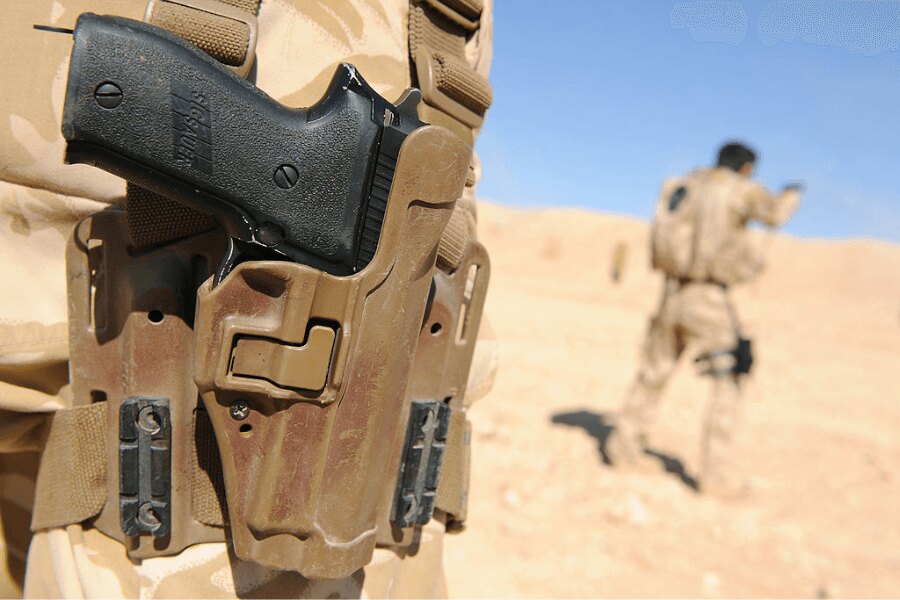
Pistol holsters made of polymer and kydex make it easier to draw, on the other hand, they can wear the surface of the gun with frequent use.
Example: Cytac Mega-Fit Holster
One of the most popular polymer holsters on the market is Cytac Mega-Fit Holster, which is an universal OWB (Outside the Waist Band) holster that is compatible with over 150 models of full size and compact semi-automatic pistols from manufacturers such as Glock, Ruger and Browning. With this holster, you can easily adjust the pressure by loosening or tightening the five front screws. The gear allows you to adjust the angle of the carried gun by 360°.
You can release the pistol with your index finger and get to your gun easily. It is also worth mentioning that the Mega-Fit Holster supports 10 different transport platforms, such as paddle, MOLLE, R-Quickads Clip or MagicPlate. Oh, and as for the material, this holster uses a military-grade polymer, which is much tougher and more durable compared to other materials, plus the internal polishing greatly reduces the aforementioned disadvantage of polymer holsters.
2. Kydex
Another reliable material used for making pistol holsters is Kydex, which is a thermoplastic that was developed in 1965. The first Kydex gun holsters began to be made in the 1970s. Today, it is a popular material used to make OWB pistol holsters.
Advantages of kydex holsters:
- Relatively low weight.
- Almost no maintenance required.
- High durability and easy moulding (as with polymers).
- High resistance to water and extreme temperatures.
- Kydex can be used to model practical retention mechanisms, and the material also offers a consistent approach to drawing and gripping weapons.
Disadvantages of kydex holsters:
- Scratches on the surface of the weapon, which will appear sooner or later due to drawing and reinsertion into the holster.
- The rigid design of kydex holsters is not very comfortable to wear.
- Limited positions or inability to use for all types of weapons.
Despite these disadvantages, kydex holsters are still popular among on-duty police officers, soldiers, and some sport shooters.
3. Leather or suede
Leather is a material that has been used by mankind since ancient times. This is mainly because, until the 20th century, the choice of synthetic materials was considerably limited, and leather was also popular as a material for the production of pistol holsters due to its durability and flexibility. Leather is still used for the production of gun holsters today.
Advantages of leather holsters:
- They are comfortable to wear.
- At the same time, they are stylish.
- The weapon is pulled out of them very quietly, which you will appreciate in moments when you don't want to be heard.
- Leather pistol holsters adapt perfectly to your body.
- It protects the surface of the gun and does not harm it.
Disadvantages of leather holsters:
- The fact that leather holsters look good is negatively balanced by their price, which is the highest compared to the other mentioned alternatives.
- The pistol is pulled out of the leather holster quietly, but for a relatively long time, which usually also applies to re-inserting.
- Limited retention mechanisms.
- Frequent maintenance required.
- The leather is not waterproof and over time it abrades, changes texture and colour and degrades over time with insufficient care and/or frequent use.
- It can also have safety complications because, unlike modelled gun holsters, it does not usually fit the pistol completely.
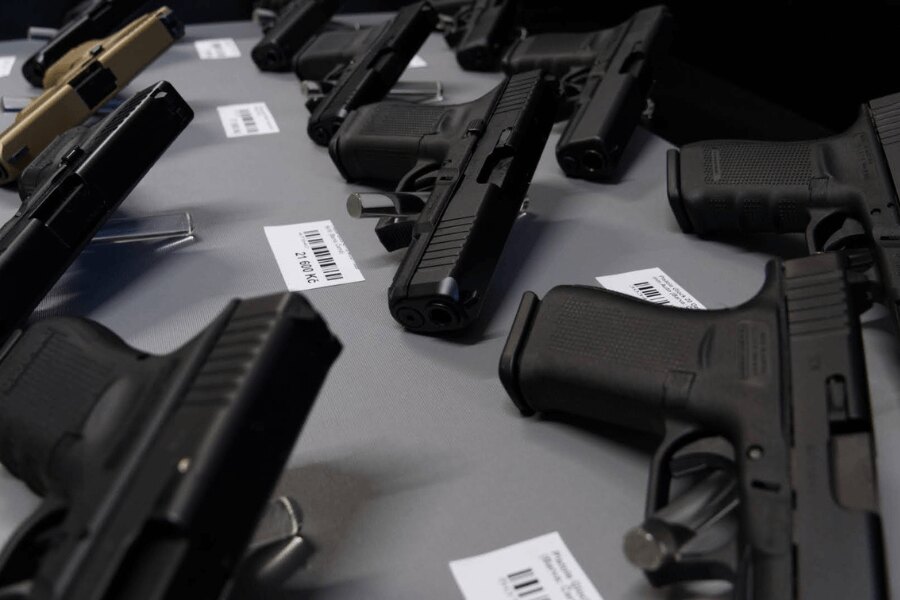
When choosing a suitable pistol holster, there are several key factors to keep in mind and avoid compromises.
4. Nylon (fabric, cloth)
Nylon and neoprene are also among the materials used to make pistol holsters. They are used for both OWB (Outside the Waist Band) and IWB (Inside the Waist Band) carry, and CCW (Concealed Carry) are generally purchased by civilian gun owners.
Advantages of fabric holsters:
- These materials are very durable, lightweight and soft to the touch, making them comfortable to wear.
- Relatively low price compared to other materials.
- Fabric holsters are often equipped with Velcro gun mounts and reinforcements to keep their shape.
Nylon as the cheapest alternative naturally has its disadvantages:
- For example, despite the reinforcements, it practically lacks structural integrity and is quite flimsy.
- Since you need both hands to draw the gun, drawing the gun is a rather lengthy affair.
- It has the lowest service life of the offered alternatives and is not waterproof.
5. Hybrid and synthetic holsters
The last option offered to us are hybrid and synthetic holsters, which combine kydex and leather, or kydex and nylon, so that they are durable and at the same time comfortable to wear. Hybrid holsters usually include a kydex frame and soft padding, which means that the weapon holds firmly in these holsters and at the same time the holster does not rub against your body. This makes this material suitable for concealed carry and IWB holsters worn under pants. The disadvantage, however, is the above-average need for maintenance.
Summary
Generally speaking, when choosing pistol holsters you should look at a few key factors that your new holster should meet while making as few compromises as possible. Those factors are, for example, comfort when wearing, durability, safety, maintenance, retention of the weapon, how the holster is adapted (can be adapted) to the given type of weapon, etc.
You should also consider what you will be using your new holster for. Whether for self-defense, combat, patrolling, shooting training or shooting competitions. Then it's time to choose the right holster material according to its properties. From the point of view of eliminating compromises, we recommend a polymer holster, because it is with polymer that the advantages outweigh the disadvantages the most.
Readers are further interested



























































































































